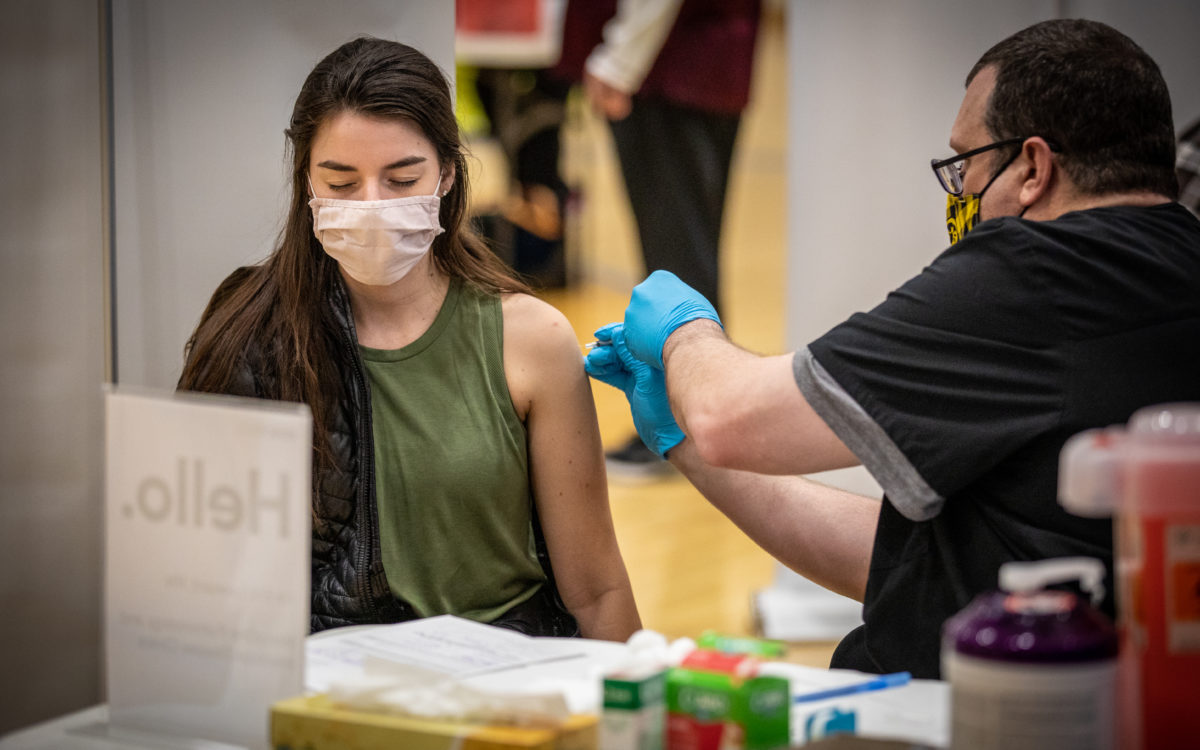Young Whan Choi is a parent and the manager of performance assessments for the Oakland Unified School District.
As we near the end of August, we are seeing more school districts in California open for full-day instruction. We should celebrate this return, knowing that distance learning has had a negative impact on the mental health of students.
Still, how we open schools will determine how safe this year will be.
How will we feel about another year punctuated with closures and reopenings and moves from distance to hybrid to in-person and back again? How will we feel seeing family members and students get sick from Covid knowing that the worst outcomes were preventable?
The choices we make now around precautions can determine the fate of our children’s education and our community’s safety. Luckily, we are holding the most powerful card in the deck — a safe and effective vaccine. The question is: Will California mandate vaccinations in time to make a difference?
Let’s consider where we are today compared to where we were in the spring of 2021 when we opened schools partially. In my home county of Alameda, the Covid case rate is 22 per 100,000 as of Aug. 17. When we reopened in spring 2021, the rate was about 5 per 100,000.
A study from England gives us a sense of how the community case rate can impact school outbreaks. In this study of roughly 928,000 students, they found that for every 5 new cases per 100,000 people, there was a 72% increased likelihood of a school outbreak (and this was prior to the delta variant).
To put it another way, we are currently seeing roughly four times the number of cases compared with last spring. Meanwhile, we are attempting to reopen schools at full capacity despite a more infectious variant and knowing full well that a higher community case rate will lead to more outbreaks.
This means we should take more precautions than we did last spring. Last spring — in Oakland, for example — we opened for partial days on a hybrid schedule with no indoor eating. This fall, however, we are opening for five full days per week at normal enrollment numbers with indoor eating. That’s why, in addition to mandatory masking, requiring vaccinations for all eligible students is critical.
But aren’t we doing well with vaccination rates? The Alameda County Department of Public Health data dashboard shows that 73.3% of Alameda County residents over 12 years old are fully vaccinated, but when we break down the data, we see how much work remains. Currently, only 57.9% of 12- to 15-year-olds are fully vaccinated. (Children under 12 are not currently eligible.) And we are seeing racial disparities, with vaccination rates of African Americans and Latino residents lagging behind. These rates of vaccination are much too low given that experts are now saying that we need to reach a 90% vaccination rate to manage the spread of the delta variant.
So, what’s stopping people?
It is important to acknowledge that people of all backgrounds have concerns about vaccine safety. No one can guarantee that there won’t be some unforeseeable side effect in 10 or 20 years. Still, we need to weigh those fears of potential harm against what we know for certain — millions of people have safely received the vaccine and are now protected against the very real and very deadly risk of Covid. Furthermore, as the pandemic continues, we see over and over again how the communities of color and working class communities bear the brunt of the economic, social and human costs of the pandemic.
Instead of wavering based on concerns about the vaccine, California must act decisively based on what we do know about vaccines: First, they are effective against the worst outcomes of Covid. Second, they will reduce community transmission rates, which is necessary to safely reopen schools.
Gov. Gavin Newsom recently mandated vaccination for all staff and teachers at schools, but we must go further. The state of California should require full vaccination for those 12 years and older. Rather than regret that we didn’t do enough, let’s play our vaccine card now.
